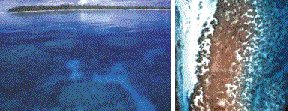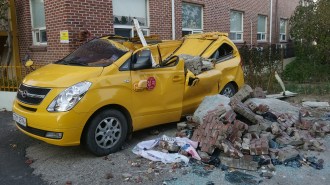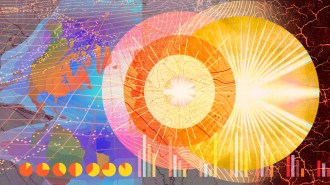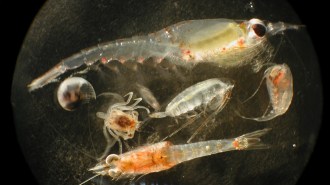Over the past several decades, the world’s coral reefs have been succumbing in record numbers to such stresses as climate warming, pollution, and bashings from ships and their gear. Scientists have monitored the toll by diving to a few sites on each reef and surveying presumably representative areas of health and damage.


Now, European scientists report using special digital sensors on a plane 250 meters in the air to diagnose more comprehensively the health of reefs.
Coral exams by scuba divers typically last days and “rarely survey more than 5 percent of a reef,” notes Peter J. Mumby of the University of Newcastle upon Tyne in England. With his team’s new Compact Airborne Spectrographic Imager (CASI) system, “we can now survey 100 percent,” sometimes in just a few hours, he reports.
To test CASI, Mumby and his colleagues first dove to survey coral in the lagoon at Rangiroa Atoll in French Polynesia. At the same time, the researchers took close-up measurements of the colors, or spectra, reflected by healthy versus sick and dead corals. Then, they calculated how those spectral readings would be distorted by the water and air between the corals and the CASI sensors.
CASI readings of the lagoon had a 1-meter spatial resolution and were within 3 percent of the accuracy afforded by an underwater survey in determining the health of reefs, according to the team’s report in the Sept. 6 Nature.
At Rangiroa, the group successfully tested reefs up to 7 meters deep. Mumby estimates that about half of reefs globally are no deeper.
To use the current version of CASI elsewhere, he says, coral surveyors would have to calibrate the equipment to the colors of local corals, sand, and algae, as well as to water clarity and air pollution. However, once surveyors make such calculations, Mumby says, “they could be applied as you fly over hundreds of square kilometers of additional reef.”







